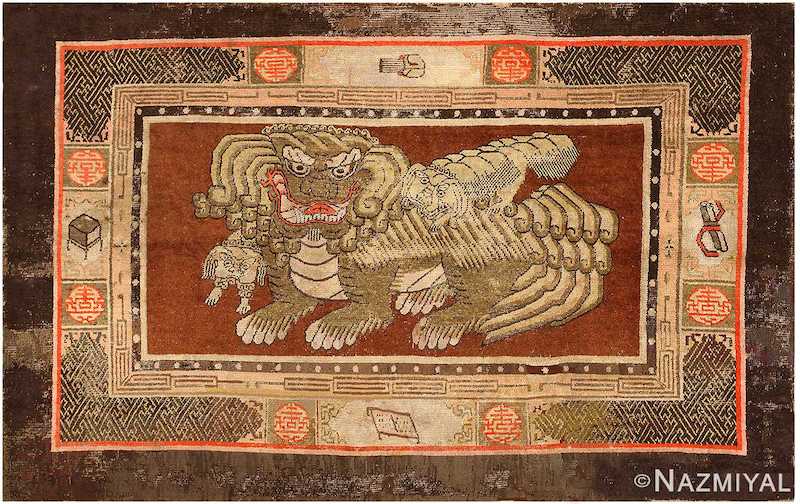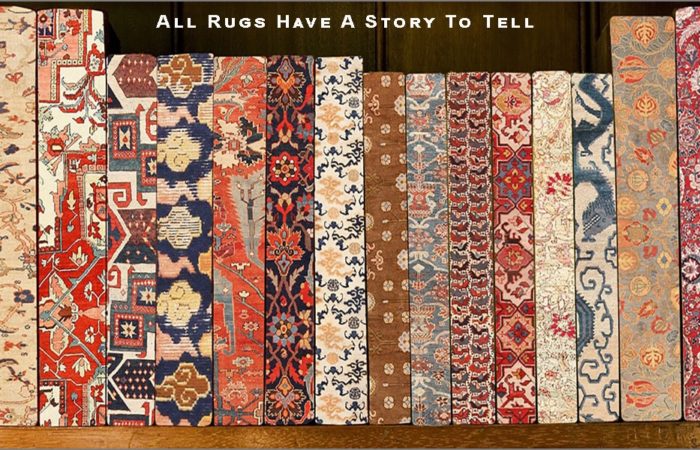The Incredible History of Kesi
Kesi, sometimes also referred to as k’o-ssu, are Chinese cut silk tapestries that have been around since the Tang dynasty. These ancient tapestries are stunning examples of art and some of the oldest in the entire world. Let’s explore some of their history and what makes them so spectacular.
What Are Kesi?
Kesi are notorious for being light and delicate while having a sharp, clear image or pattern. The name itself (k’o-ssu) literally means cut silk, because the distinct and unblended areas of color in these tapestries give the illusion that the threads have simply been cut. These tapestries are reversible, with a perfect weave on both sides. While many European weavings used horizontal looms, kesi were woven on a vertical loom with vertical warps. As in many rugs and tapestries from this era, they can be made more luxurious by using silk and metallic threading. However, use of metallic threading isn’t always present in kesi.
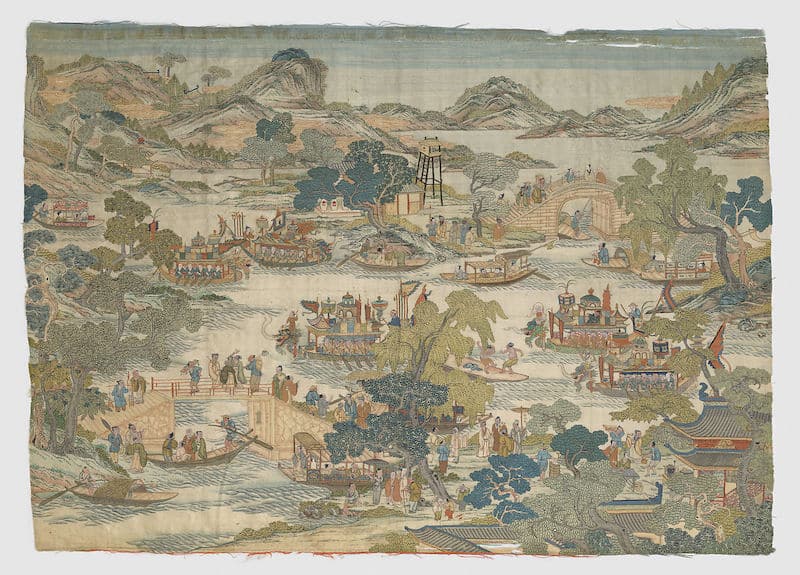
A pictorial silk and metallic threaded kesi from China’s Qing dynasty.
Kesi also commonly imitated paintings. These would be used in exactly the same purpose as a painting would be. For example, the tapestry would be mounted on a scroll that told a story, just as a painted illustration would be. Sometimes, kesi were made to cover large wall surfaces. When woven for this purpose, they were a little bit heavier and often brighter colored. These tapestries, as with tapestries in many other cultures and eras, were also occasionally used to decorate furniture and clothing.
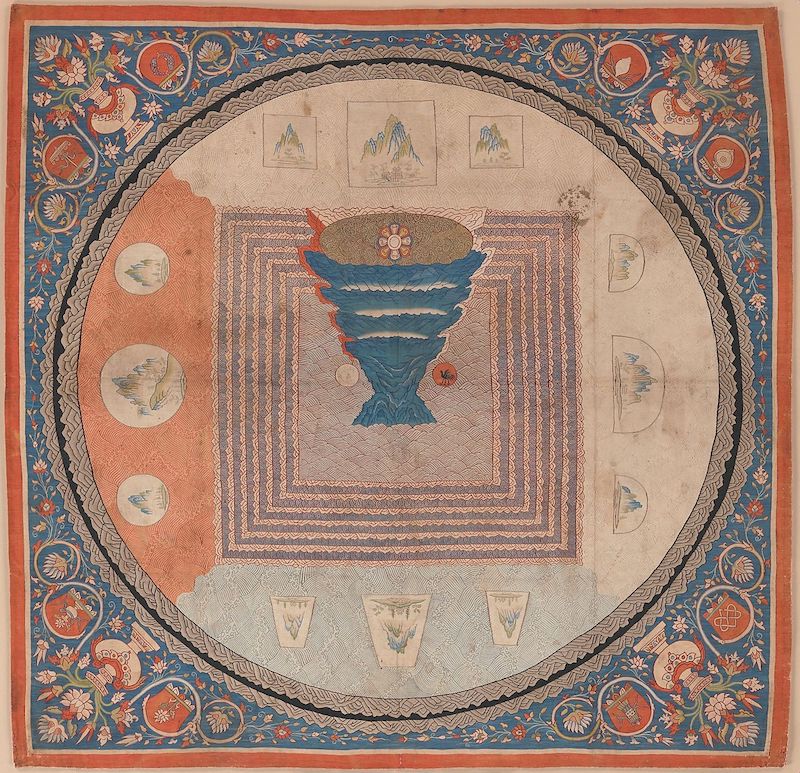
An early mandala kesi from the 14th century.
History of Kesi
The Tang dynasty lasted from the years 618 to 907, and believe it or not, there are still surviving pieces of kesi from this ancient era. These pieces of history have been uncovered along Silk Road trade routes in some remote areas of Central Asia. Remains and fragments of tapestries from the 8th century have been found in the deserts of Xinjiang, China, as well as in caves in the Gansu province. However, the pieces that have been found are relatively simple and contain only basic repeating patterns. Historians believe that this is not an accurate representation of the fully developed kesi from this period. Conversely, there is one piece from the 8th century that is much larger and more complete. Hanging in the Taima-dera, a temple in Nara, Japan, is a nearly complete wall tapestry. The story of the Tang dynasty priest Shandao gives historians everything they know about the piece, and it is believed to be the oldest surviving example of Chinese weaving.

The Taima-dera in Japan.
A little bit later came the Song dynasty, which lasted from 960 to 1279. During this time the imperial family encouraged and enjoyed the arts, including painting and tapestry. This was followed by the Yuan dynasty until 1368. A government factory for weaving kesi was founded at Hangzhou in Zhejiang province at this time. These Hangzhou kesi were opulent and notorious for their rich, ornamental designs, and often woven with gold and silver threads.
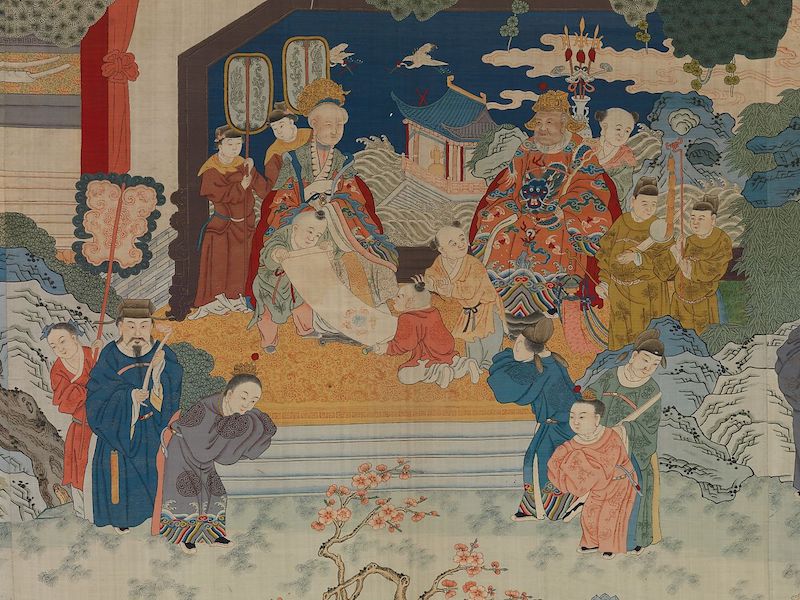
A pictorial kesi from the Qing dynasty (1644 – 1911).
The following dynasty was the Ming dynasty, from 1368 to 1644. Examples of kesi from this period are rare, but exquisite. The following rule of the Manchu emperor Kangxi, from 1661 to 1722, produced some of the finest kesi from all of China’s history. These pieces are delicately colored and depict religious and philosophical themes. From the many examples that still exist, however, we begin to see an artistic and technical decline in the later pieces. By the 19th century, woven designs in kesi were being supplemented with painting.
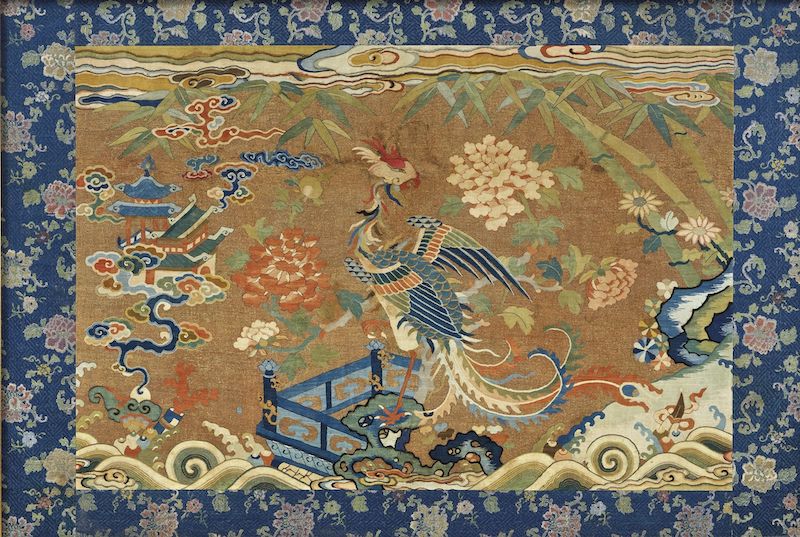
A kesi depicting a phoenix from the Ming dynasty.
In the late 15th or early 16th century, historians estimate, this kesi weaving art moved from China to Japan. The Japanese weavers developed the art of tsuzure-nishiki, meaning poly-chrome tapestry. The Japanese pieces differ from kesi in that they are thicker, more pronounced, and use cotton weft.
Clearly, the art of weaving in ancient all the way up to modern China has a varied and intricate history. With some of the oldest examples of tapestry in the entire world, kesi pioneered the art of tapestry weaving. Take a look at our selection of Chinese rugs below and see if you can spot some of the same spectacular weaving techniques used throughout the country in both tapestry and rugs.
Here are some stunning Chinese rugs from the Nazmiyal Collection:
Learn about: Learn How To Hang A Tapestry Or Rug On The Wall | What Are Historical Tapestries? | Historical Biblical Tapestries | Gobelin Tapestry History | History of the Bayeux Tapestry | William Baumgarten & The Aubusson Tapestries | History of the Beauvais Tapestries | Barberini Tapestries Reborn from the Ashes | Green Tapestries Vogue 2017 Home Decor | Alighiero Boetti Tapestries | What Are The Unicorn Tapestries?
This rug blog about kesi was published by Nazmiyal Antique Rugs.


